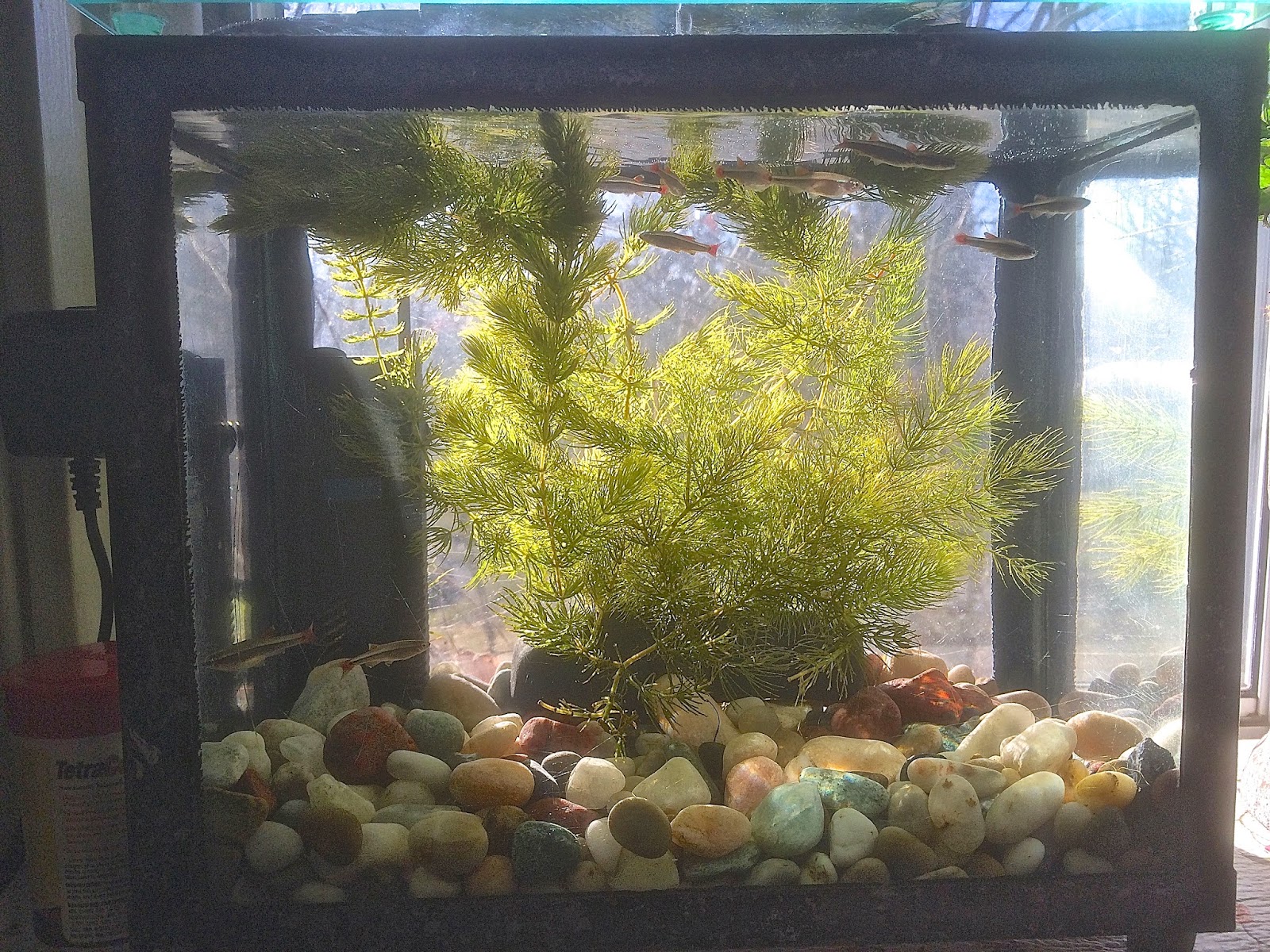Every year I set up a 1-gal circa 1920 fish
tank for my wife in a southern facing kitchen window, this year was no
excepting to the rule. The plants are Ceratophyllum demersum AKA: Hornwort, a
coldwater species of plant that really doesn’t do as well as it should in warmer
water unless natural sunlight is added like that, that’s in a pond. Cooler
temperatures of 60-70˚F are ideal for this plant species.
The small air bubbles you see in the photo
coming from the plants are because it is photosynthesizing and the water temp
to oxygen saturation point has been reached. Whenever you see these small air
bubbles coming from a plant you know that plant is cleaning your water and
taking ions out of it. Without those small air bubbles then they are not
working as hard as they should be, cleaning your aquarium water.
The fishes in the tank are another coldwater
species called Tanichthys albonubes AKA: White Cloud Mountain Minnow from
China. At this time of year when American’s (especially in the Northern States)
face colder temperatures outside, their homes are usually cooler inside too. My
home will dip as low as 65˚F at nighttime and warm back up again to 73˚F during
the day. They require oxygen to be at saturation point like all minnows do, so
a small pump and/or aeration device is needed for their tank. However, a heater
can be forgone because they like their water cold.
One problem hobbyist have is the
availability of fish that can tolerate a cooler home environment without the
aid of heating the aquarium to the fishes requirements.
Betta brederi/splendens always seem to be
the desire fish for small containers but they do not do as well if water temps
dip too low blow 76˚F. The hobbyists always wonder why their Betta’s dies in
the winter months and in the summer months thrive. The distribution of heat
transformation is always faster in smaller aquariums than larger ones. So the
fluctuation of these faster up and down temps always plays havoc on Betta’s
metabolism and they begin to stop eating. Once that happens death is not far
behind.
Another good coldwater species of fish that
can live for several years in a small container or small aquarium (that’s not a
Goldfish) is the Macropodus opercularis AKA: Paradisefish. This was the first tropical fish
outside of Goldfish or coldwater pond fish that actually thrived in the colder
Victorian homes of yore.
They are sometimes not very friendly with
other of there own kind and may fight constantly if kept with more than one per
small container. The size of container they need be no bigger than that you
normally would keep a Betta in. Oxygen is taken from the atmosphere so
filtration and aeration is not needed. Plants are always welcome if you can
provide them.
Dr. Novak is an Ichthyologist and
Limnologist and researches in aquatic microbiology. Read more on his blog @
 |
| 1-gal circa 1920 fish tank |
 |
| Tanichthys albonubes AKA: White Cloud Mountain Minnow from China. |
 |
| The small air bubbles you see in the photo coming from the plants are because it is photosynthesizing and the water temp to oxygen saturation point has been reached. |












